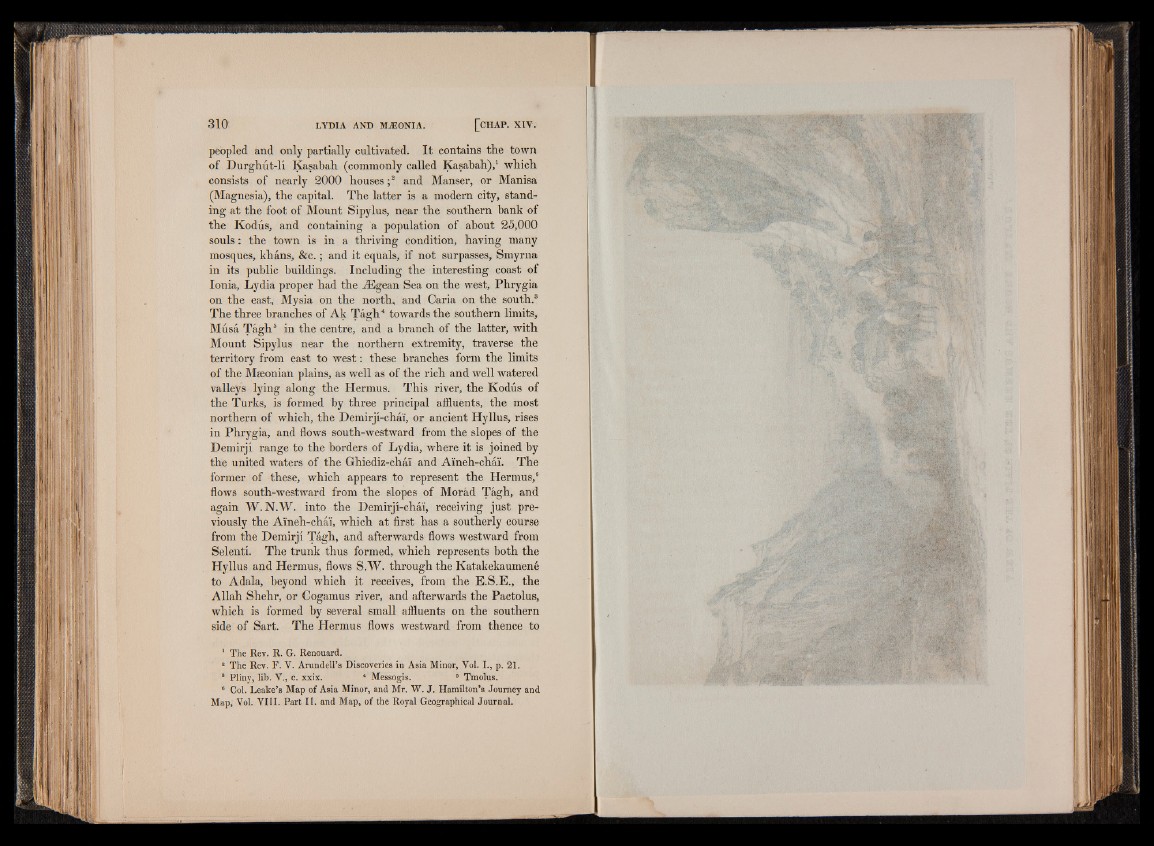
peopled and only partially cultivated. It contains the town
of Durghut-li Kasabah (commonly called Kasabah),1 which
consists of nearly 2000 houses ;2 and Manser, or Manisa
(Magnesia), the capital. The latter is a modern city, standing
at the foot of Mount Sipylus, near the southern bank of
the Kodus, and containing a population of about 25,000
souls: the town is in a thriving condition, having many
mosques, khans, &c.; and it equals, if not surpasses, Smyrna
in its public buildings. Including the interesting coast of
Ionia, Lydia proper had the iEgean Sea on the west, Phrygia
on the east, Mysia on the north, and Caria on the south.3
The three branches of Ak Tagh4 towards the southern limits,
Musa Tagh5 in the centre, and a branch of the latter, with
Mount Sipylus near the northern extremity, traverse the
territory from east to west: these branches form the limits
of the Mseonian plains, as well as of the rich and well watered
valleys lying along the Hermus. This river, the Kodus of
the Turks, is formed by three principal affluents, the most
northern of which, the Demirji-chai, or ancient Hyllus, rises
in Phrygia, and flows south-westward from the slopes of the
Demirji range to the borders of Lydia, where it is joined by
the united waters of the Ghiediz-chai and Aineh-chai. The
former of these, which appears to represent the Hermus,6
flows south-westward from the slopes of Morad Tagh, and
again W. N.W. into the Demirji-chai, receiving just previously
the Aineh-chai, which at first has a southerly course
from the Demirji Tagh, and afterwards flows westward from
Selenti. The trunk thus formed, which represents both the
Hyllus and Hermus, flows S.W. through the Katakekaumene
to Adala, beyond which it receives, from the E.S.E., the
Allah Shehr, or Cogamus river, and afterwards the Pactolus,
which is formed by several small affluents on the southern
side of Sart. The Hermus flows westward from thence to
1 The Rev. R. G. Renouard.
2 The Rev. F. V. Arundell’s Discoveries in Asia Minor, Vol. I., p. 21.
8 Pliny, lib. V., c. xxix. 4 Messogis. 5 Tmolus.
6 Col. Leake’s Map of Asia Minor, and Mr. W. J . Hamilton’s Journey and
Map, Vol. VIII. Part II. and Map, of the Royal Geographical Journal.